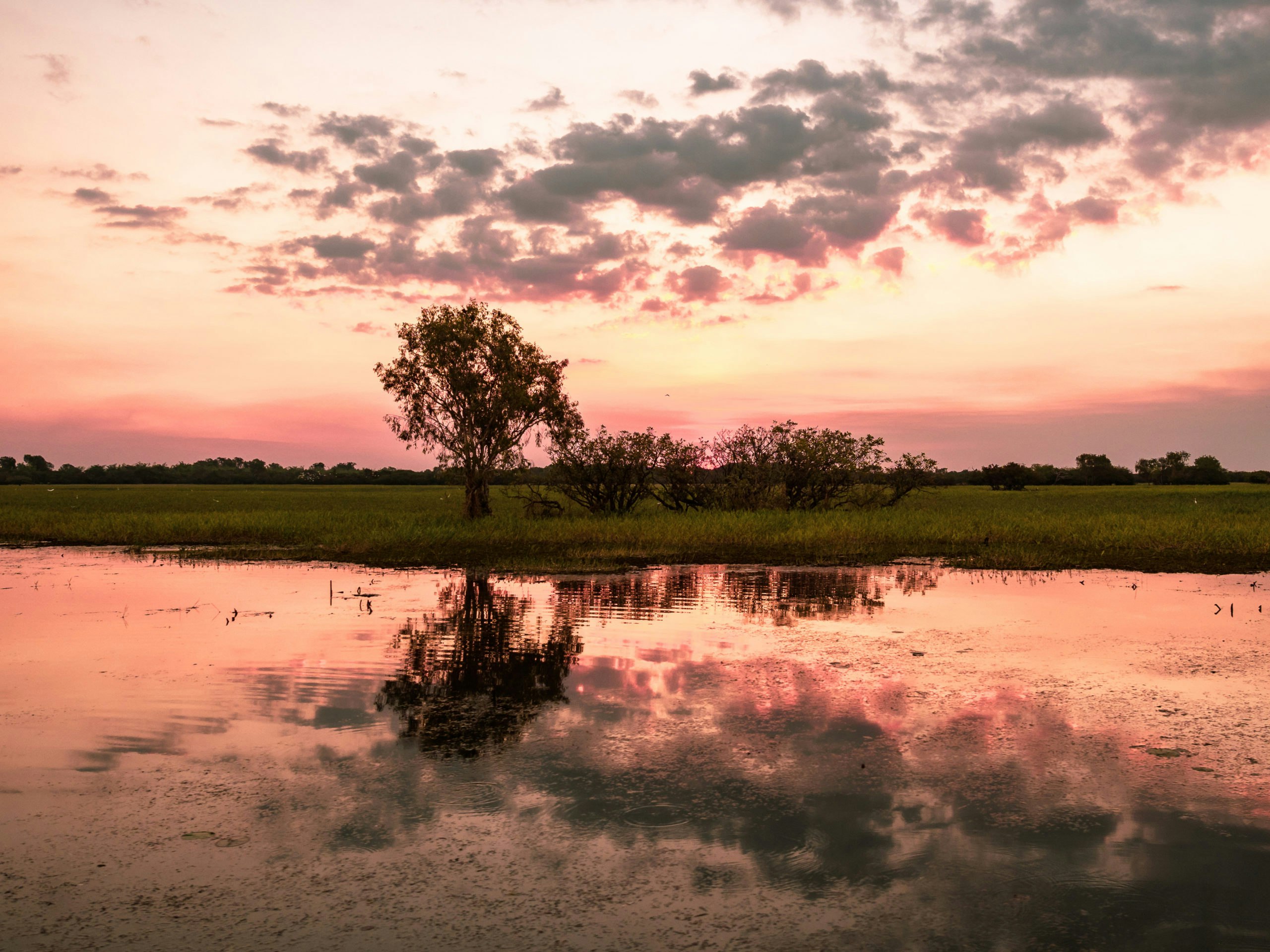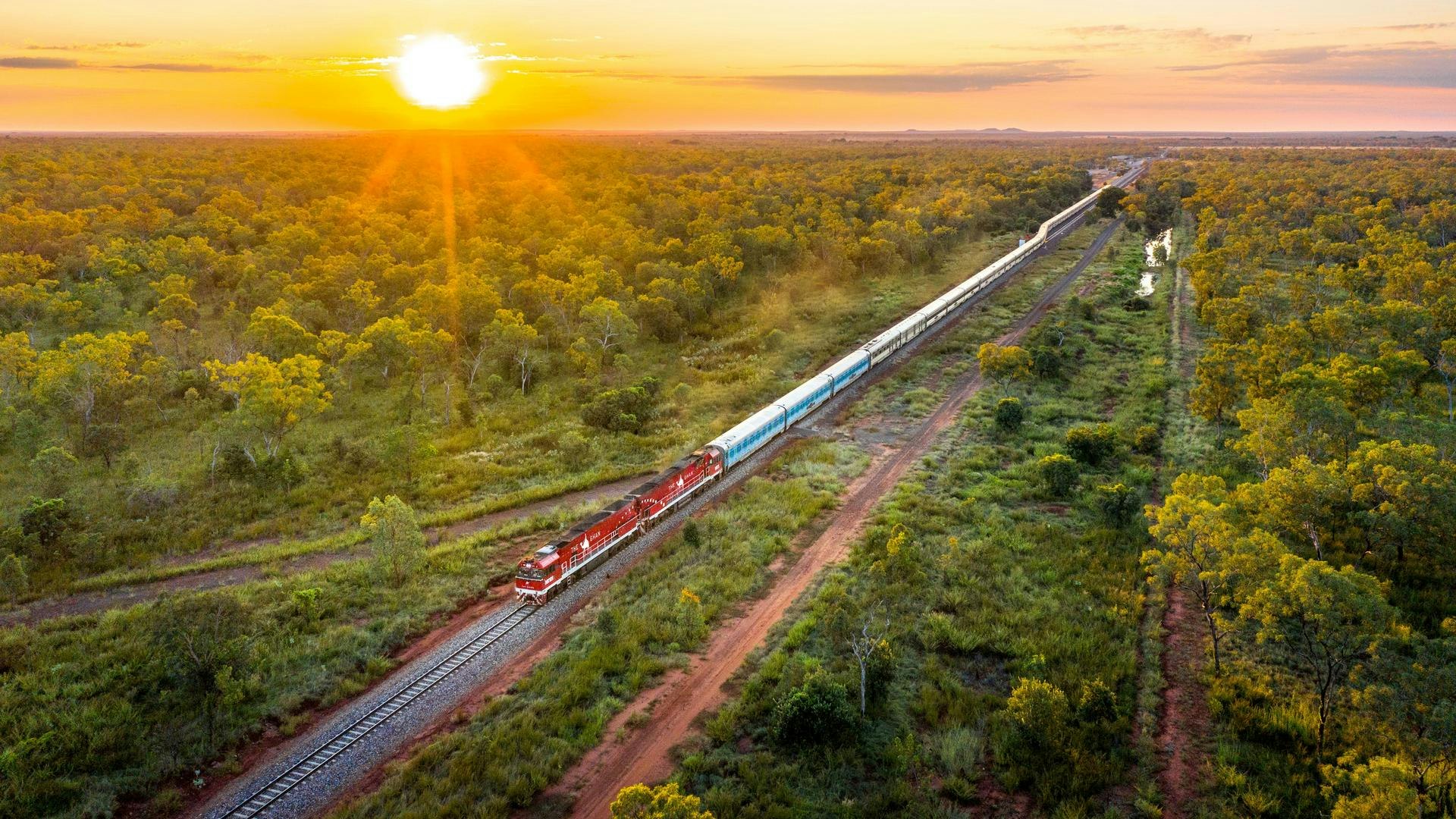
A Land Of Contrasts
The Northern Territory, The Territory, or The Top End, no matter what you call it, there is one undeniable fact. The Northern Territory is a land of contrasting landscapes.
WORDS: Ella Chronowski
ULURU
Uluru Kata Tjuta National Park is the spiritual heart of Australia. The Anangu people believe ancestral beings created Uluru at the beginning of time, and it remains a living, breathing, sacred site. For the Anangu people, the sacred site expands past the rock and goes into the nearby riverbanks and trees surrounding the area.
No matter what time of day you visit Uluru, the rust-red surface glows in the sun. Scientists have dated the creation of Uluru 500 million years ago, first beginning in water when the entire region was underwater, making the structure an extremely unique geological site.
In the early dawn, or as the moon rises above the horizon, the colours of renowned artist Bruce Munro’s Field of Light installation illuminate Uluru. The exhibition, aptly named Tili Wiru Tjuta Nyakutjaku or ‘looking at lots of beautiful lights’ in local Pitjantjatjara, sees 50,000 solar-powered lights blanket the size of seven football fields and enhance the desert’s colour pallet of ochre, deep violet, blue and gentle white.
![]()
KAKADU NATIONAL PARK
The UNESCO World Heritage-listed Kakadu National Park spans over 19,000 square kilometres and is Australia’s biggest national park. The Bininj/Mungguy people have called Kakadu home for some 65,000 years and remain the oldest living culture in the world. Wildlife, woodlands and wetlands make up the diverse landscape, and when you visit Kakadu, it becomes clear the peaceful quiet of the land has stories to share.
There is so much to explore in Kakadu. The Park is Home to more than 5,000 Aboriginal rock art sites, and travellers can visit Ubirr, which hosts the world’s most outstanding rock art and is one of the reasons for Kakadu’s dual World Heritage status. Cruise the lush East Alligator River and spot the saltwater crocodiles that dwell below the surface, or take to the skies on a scenic flight over ancient escarpments, floodplains and winding rivers, displaying the results of 1.8 billion years of continuous erosion, and that’s just scratching the surface.
![]()
LITCHFIELD NATIONAL PARK
If Kakadu is remote and rugged, then Litchfield National Park is wild and wet. As the traditional lands of the Marrathiel, Marranunggu, Werat, Warray and Koongurrukun peoples, the park covers 1,500 kilometres and though considerably smaller than Kakadu, has a landscape just as dramatic.
The vast ancient sandstone plateau of the Tabletop Range frames most of the park. Steep escarpments create lush watering holes and waterfalls that cascade into clear pools in the cliff’s shadows, offering a cool respite from The Territory heat where you can float away the afternoon.
Along with Wangi Falls and Florence Falls, one of the most impressive reasons to visit Litchfield National Park are the unusual rock formations and huge Magnetic Termite mounds. These structures are up to 100 years old, and some even stand two metres high on a wide flat plain.
![]()


